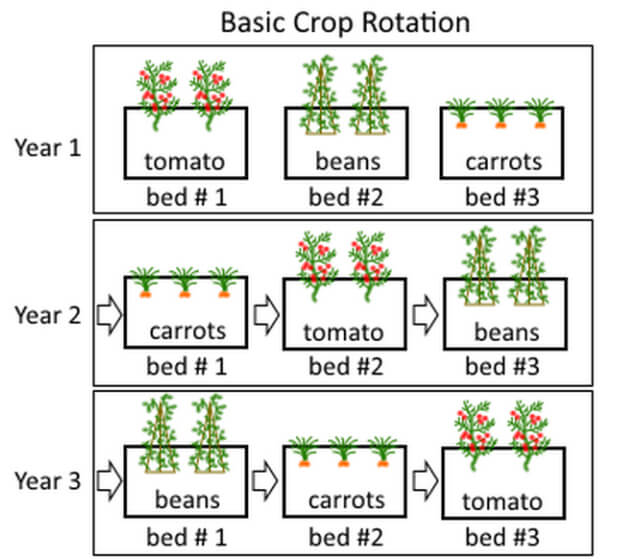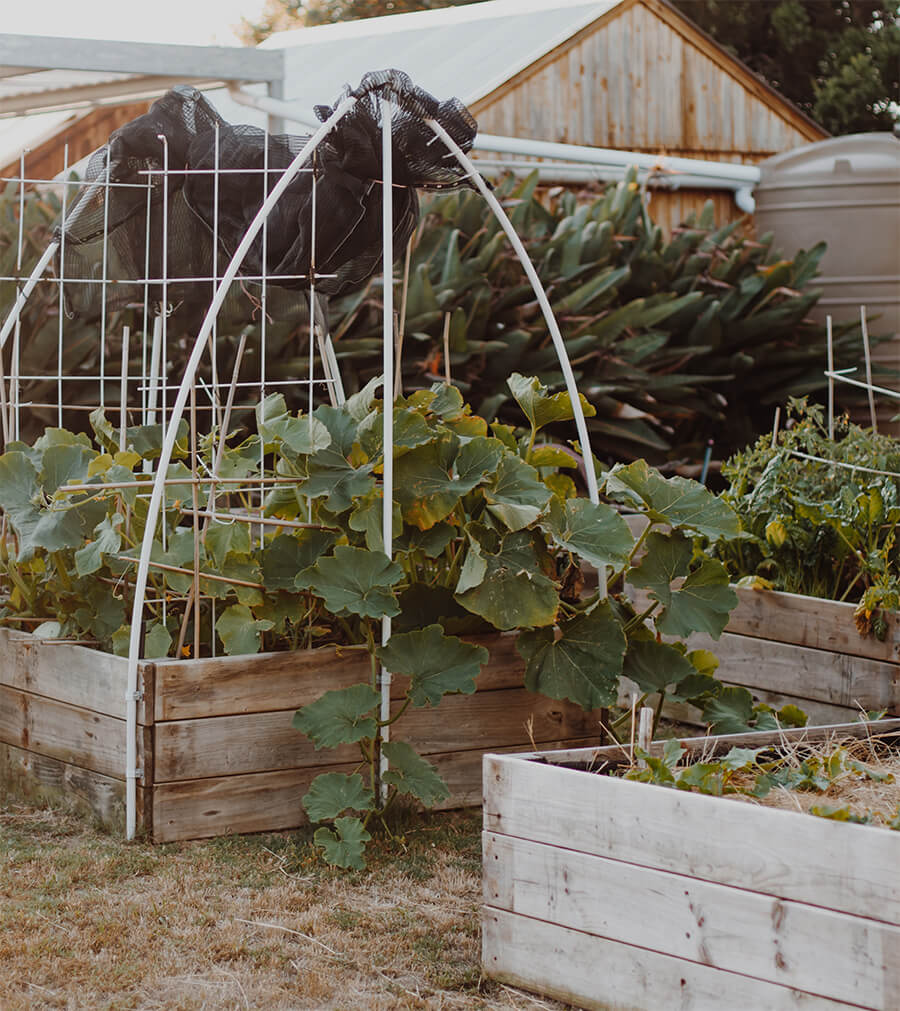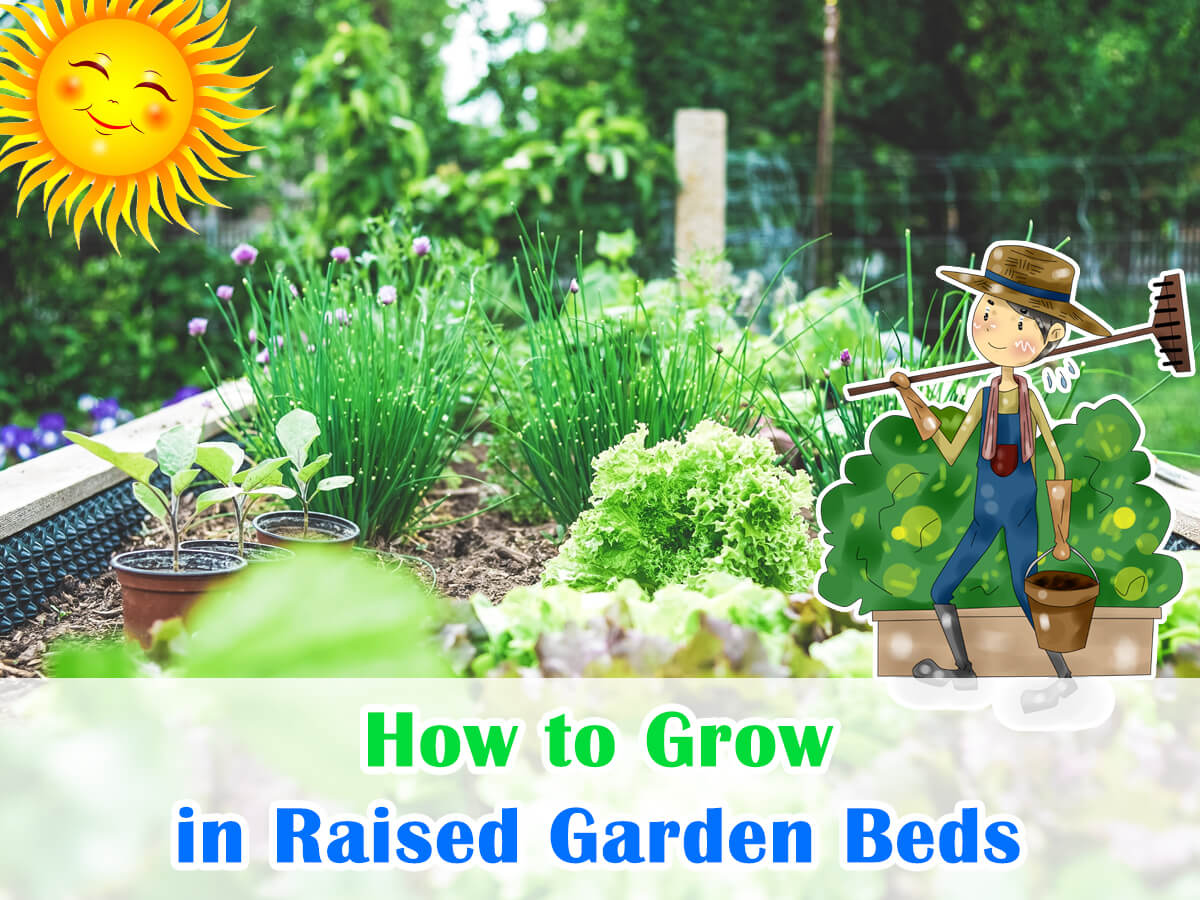Growing in raised garden beds is a method I hold near and dear to my heart. It’s a practice that not only brings me closer to nature but also evokes a sense of accomplishment that’s truly unparalleled. The bountiful harvest, the vibrant blooms, the very act of nurturing life—it all comes together in the humble confines of a raised garden bed.
It’s a joy that, today, I want to share with you, whether you’re a seasoned gardener or a complete novice. So, let’s dive in and learn how to grow in raised garden beds, step by step.
How to Grow in Raised Garden Beds
1. Choose the Perfect Location
The first step to any successful gardening project is picking the right location. In the case of raised garden beds, this might be even more critical, as you can’t easily move them once they’re set up.
You want to choose a spot that receives at least six to eight hours of sunlight a day. Vegetables and most flowering plants need this much light to thrive. Also, consider accessibility. You’ll want your garden bed close enough to a water source and in a place where you can comfortably work.
2. Select and Set Up Your Raised Bed
Next, you need to choose and set up your raised garden bed. There’s no ‘one size fits all’ here—it depends on your space, your budget, and your aesthetic preferences.
You can buy pre-made beds, build your own out of wood or other materials, or even use repurposed items like old wine crates or pallets. Just ensure the bed is at least 12 inches deep to accommodate a variety of plants and their root structures. After you’ve selected your bed, fill it with high-quality garden soil and compost for a nutrient-rich base.
For a high-quality, low-priced raised bed, I suggest going for a metal garden bed, such as the popular Land Guard Galvanized Raised Garden Bed on Amazon. Constructed from double-layer, anti-corrosion galvanized Q195 metal sheets, this raised garden beds features an elegant oval design. This aesthetic enhancement also bolsters the bed’s durability, as the structure can withstand substantial pressure at the seams without loosening. With a shape that resists deformation, these garden beds promise longevity, serving your gardening needs for many years to come. Available in 5 eye-pleasing colors. Click here to check the current discount price and read more than 5,900 positive reviews.
3. Decide What to Plant
Deciding what to plant is often the most fun part. Are you a fan of fresh tomatoes, or do you fancy the vibrancy of marigolds?
Remember, different plants have different needs, so research your chosen plants’ requirements. Look at their sunlight and watering needs, soil preferences, and consider companion planting, which involves grouping plants that benefit each other.
4. Plant Your Seeds or Seedlings
Now that you’ve got your soil, your bed, and your plants picked out, it’s time to get your hands dirty!
Plant your seeds or seedlings according to the directions given for each plant type. Some plants prefer to be sown directly into the ground, while others do better when started indoors and then transplanted. Remember, spacing is critical. Overcrowding can lead to limited resources for your plants and increase the chances of disease.
5. Nurture Your Garden
Caring for your garden is an ongoing commitment. Regular watering, feeding, weeding, and monitoring for pests and diseases are all part of the journey.
Remember, plants like consistency, so try to water and fertilize on a schedule. Also, consider mulching your raised bed. Mulch helps retain soil moisture and deters weed growth, two significant advantages in any garden.
6. Improve Your Soil
The next essential step after you’ve successfully planted in your raised bed is ensuring your soil’s health. Raised bed gardening allows us to optimize our soil conditions better than traditional in-ground gardening.
Start by adding organic matter like compost, well-rotted manure, or leaf mold. These elements will significantly improve the fertility and structure of your soil, facilitating plant growth.
Don’t forget to include a balanced slow-release organic fertilizer at the start of each growing season. Test your soil every couple of years to monitor nutrient levels and adjust your additions accordingly. Remember, healthy soil is the key to a thriving garden.
7. Experiment with Plant Arrangements
In a raised garden bed, you have the freedom to experiment with various plant arrangements that might not be possible in a traditional garden.
Try the Square Foot Gardening method, which optimizes space by dividing the garden into one-foot squares, each hosting a different kind of plant. This method reduces the amount of space wasted in between rows in traditional gardens. As you can see, I’ve linked to the book that goes into more details on this successful gardening method. Developed by Mel Bartholomew, the Square Foot Gardening technique provides a terrific solution to the gardeners’ frustrations. Click here to read more about this wonderful book and see additional reviews.

8. Cover Crops and Crop Rotation
Using cover crops during off-seasons can be beneficial for your raised garden bed. These crops, such as clover or rye, help prevent soil erosion, suppress weeds, and can enrich your soil as green manure.
Crop rotation is another practice you should consider in your raised garden beds. This involves planting different crops in each bed each year, helping prevent the buildup of diseases and pests that can occur when the same plant is grown in the same spot year after year. This practice also aids in nutrient management, as different plants have varying nutrient needs.
Here is an example of crop rotation that involves 3-year cicle and 3 garden beds:

9. Expand Your Garden
Once you’ve gotten the hang of managing one raised bed, consider adding more. Having multiple beds allows you to grow a wider variety of plants and extend your harvest season. You can stagger plantings for continuous harvest or use the additional beds for succession planting, replacing one crop with another as the growing season progresses.
Common Mistakes and How to Avoid Them
Like any venture, raised bed gardening can have its share of missteps. Let’s go through them and learn how they can be avoided.
Overwatering
Overwatering is a common but avoidable mistake in raised bed gardening. While plants need sufficient water to thrive, too much moisture can lead to waterlogged soil and root damage. Investing in a simple moisture meter can help you gauge the right amount of water for your plants, promoting healthy growth without the risk of overhydration. It’s crucial to understand the specific watering needs of the plants in your garden and to adjust your watering practices accordingly.
Understanding Fertilization Needs
Each plant has unique nutrient requirements, and understanding what those are can prevent under-fertilizing or using the wrong kind of fertilizer. A one-size-fits-all approach may not yield the best results, leading to nutrient deficiencies or imbalances. By conducting a soil test, you can determine exactly what nutrients your soil lacks, allowing you to choose the right fertilizer and apply it in the proper amounts. Tailoring your fertilization to the specific plants in your bed will create a more favorable environment for growth.
Consideration of Plant Spacing
Plant spacing is often overlooked but plays a vital role in a successful raised bed garden. Overcrowding can result in competition for resources like sunlight, water, and nutrients, and increase susceptibility to diseases. Understanding the mature size of each plant and giving it enough space to grow without competition is essential. Proper spacing allows for better air circulation, reducing the risk of fungal diseases, and ensures that each plant receives the nutrients it needs to thrive. Planning your garden with careful consideration of plant spacing will lead to healthier plants and a more bountiful harvest.
For additional mistakes that you need to avoid, check out the following video from Epic Gardening:
Raised Bed Garden Designs and Layouts
The beauty of raised bed gardening is that it’s not one-size-fits-all. From traditional wooden boxes to creative upcycled designs, the options are endless.
You can create a classic kitchen garden with a simple grid of square-foot beds. Alternatively, consider a tiered garden that uses the vertical space in your garden, perfect for gardens with a slope. Upcycling materials for your beds, such as bricks or wine bottles, can add a unique twist to your garden design. The key is to choose a design that complements your space and meets your plants’ needs.
Tips for Maintaining Your Raised Bed Garden
Proper Seasonal Care
Proper seasonal care ensures the long-term success of your raised bed garden. Spring is for planting and soil amendment, giving your crops the best possible start. Summer is ideal for weeding, watering, and harvesting, keeping your garden thriving and productive. Fall and winter preparations, such as adding mulch and planning the next season’s crops, set you up for success in the coming year.
Soil Rejuvenation and Watering Techniques
Regularly rejuvenating your soil is vital for keeping your garden healthy. Between growing seasons, add compost or other organic matter to replace nutrients that previous crops have depleted. Alongside soil care, develop an effective watering routine that meets your plants’ needs without overwatering. Watering deeply and less frequently encourages deep root growth, strengthening your plants and helping them withstand dry conditions.
Keeping a Clean and Tidy Garden
A tidy garden is more than just visually appealing—it’s also crucial for plant health. Regular weeding prevents unwanted plants from stealing nutrients and water from your crops. Removing spent plants at the end of their growing season helps prevent disease and pest infestations. This practice, combined with other general tidying efforts, like pruning and removing debris, helps your garden stay healthy and beautiful, maximizing the rewards of your hard work.
Raised Bed Gardening for Specific Plants
Adapting your raised bed to accommodate specific plant types can increase your success. Root vegetables, like carrots and beets, love the deep, loose soil of raised beds. For berries, consider a bed with a trellis for support and ease of harvest.
Herb gardens also do well in raised beds. You can group herbs with similar sunlight and water needs, making care easier. Plus, having your herbs in a raised bed near your kitchen makes it simple to harvest fresh herbs while you cook.
Here is a table of 10 most common plants and hearbs, and their raised bed requirements.
| Plant/Herb | Raised Bed Requirements |
|---|---|
| Tomatoes | Deep, well-drained soil; support structures like cages; full sun |
| Carrots | Loose, sandy soil that’s free of rocks; moderate sun |
| Peppers | Well-drained, nutrient-rich soil; full sun |
| Strawberries | Slightly acidic, well-drained soil; full sun |
| Basil | Well-drained soil rich in organic matter; full sun |
| Mint | Moderately rich, well-drained soil; partial shade to full sun |
| Lettuce | Loose, cool soil; partial shade |
| Rosemary | Well-drained, slightly alkaline soil; full sun |
| Cucumbers | Fertile, well-drained soil; support like trellis; full sun |
| Spinach | Rich, well-drained soil; partial shade |
Eco-friendly Practices in Raised Bed Gardening
Sustainable practices in raised bed gardening can help reduce your environmental footprint. One of the easiest ways to do this is through composting. By composting your kitchen and garden waste, you create a nutrient-rich amendment for your soil.
Rainwater is another resource you can tap into. Set up a rain barrel to collect rainwater for watering your garden. It’s better for your plants and helps conserve water.
Attracting beneficial insects to your garden is another sustainable practice. Pollinators, like bees and butterflies, help your plants, while predatory insects, like ladybugs, help control pests. Plant flowers to attract these helpful creatures to your garden.

The Advantages of Raised Garden Beds
Raised garden beds aren’t just functional; they can be an integral part of your landscape design. They can add height and texture to a flat garden, and you can paint or stain the beds to complement your home’s exterior. They can even be used to create a “garden room” effect, adding privacy and defining different areas of your yard.
One of the biggest advantages of raised garden beds is their ability to provide excellent drainage. This makes them a great choice for gardeners dealing with heavy clay soils that don’t drain well.
Raised beds are also more accessible for those with mobility issues. They can be built at a comfortable height, reducing the need to bend over or kneel.
Furthermore, by controlling the soil in your raised beds, you can accommodate a variety of plants that might not otherwise thrive in your native soil. This control extends to maintaining the soil’s pH levels, nutrient content, and even its temperature, as raised beds tend to warm up faster in the spring.
The Community Aspect of Raised Garden Beds
Lastly, let’s not forget the communal aspect of gardening. Joining a local gardening club or online group can provide invaluable support and advice. Share your successes, learn from others’ experiences, and get tips and tricks for growing in raised garden beds. Gardening is not just about the plants; it’s about the community we cultivate around us.
Raised bed gardening provides an opportunity for anyone to engage with nature, regardless of their gardening experience or the amount of available space. Whether you’re growing vibrant flowers, succulent vegetables, or aromatic herbs, each raised garden bed is a testament to life’s enduring and flourishing beauty.
Final Words
With all these advantages, raised bed gardening offers a deeply rewarding experience, promising abundant produce and a meditative hobby. As you embark on this gardening journey, remember that every garden is unique, reflecting the soul of the gardener. So, make your garden a testament to your passion and patience, and most importantly, don’t forget to enjoy the process. After all, gardening is as much about the journey as it is about the harvest.
Happy gardening!



